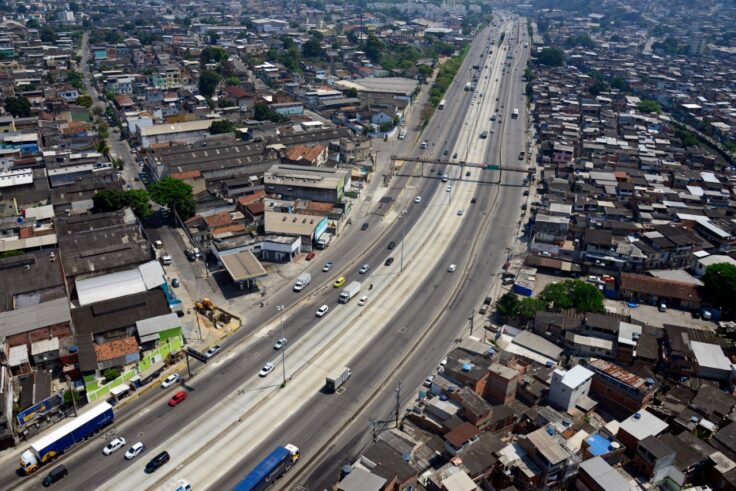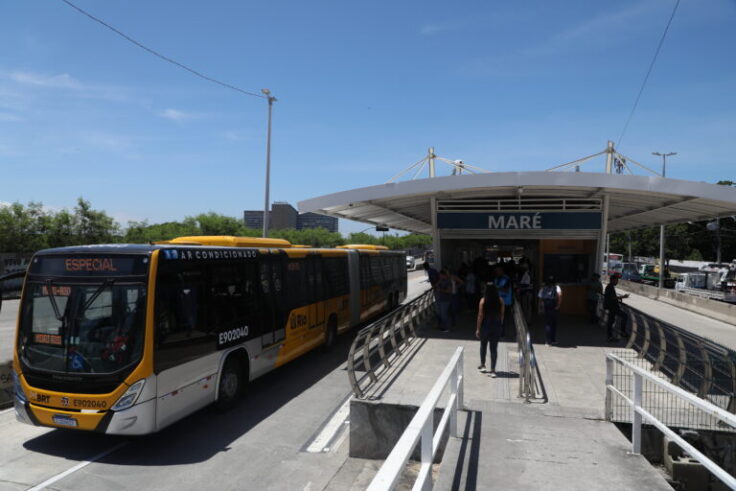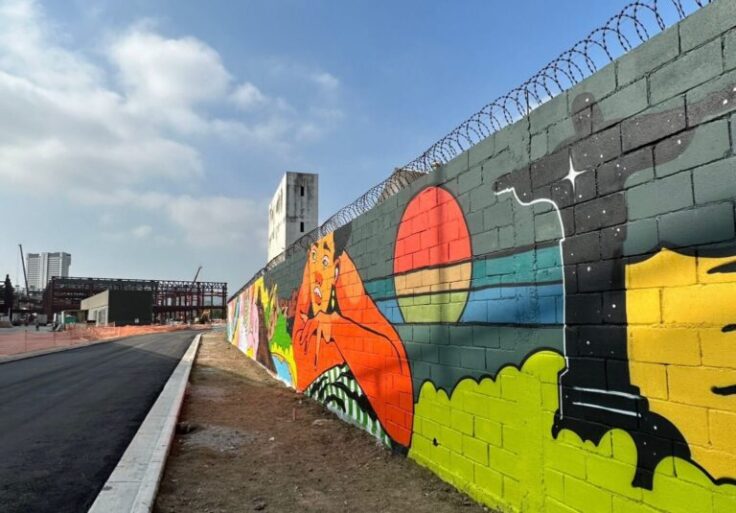February 27, 2024
In Rio de Janeiro, the New TransBrasil BRT Takes Shape
Avenida Brasil is one of the most important roads in Brazil and, at nearly 60 kilometers in length, serves as one of the primary thoroughfares connecting people, goods, and services in the Rio de Janeiro metro area.
Read a version of this article in Portuguese on ITDPBrasil.org.
After ten years of development, February 2024 marked the debut of TransBrasil, a milestone for the city as it significantly expands the potential of medium and high capacity transport for Rio residents that rely on public transport every day. The BRT corridor, currently with 20 stations, is expected to serve upwards of 250,000 people a day by 2030. Notably, its route along the Avenida Brasil provides service to multiple neighborhoods comprised of diverse, mixed-income, and transit-dependent populations. While the debut of TransBrasil offers much promise for the future of BRT in Rio, it is also important to recognize the areas where the new system will need to improve in order to be a truly inclusive transport option.
The first BRT corridor in the capital of Rio de Janeiro began operations with TransOeste in 2012, followed by TransCarioca and TransOlímpica. TransBrasil, however, stands out for its location along a particularly strategic and emblematic thoroughfare for the city that can now link a broader swath of Rio’s metropolitan and intercity areas. Avenida Brasil cuts through 26 neighborhoods where the majority of lower-income Rio residents live, and the launch of this new corridor has the potential to not only encourage higher public transport ridership but also help communities reshape their mobility patterns as a whole.

Given that thousands of people utilize Avenida Brasil every day, it has become the city’s main expressway catering to commuters who need to travel across Rio’s municipalities to study, for work, for leisure, or to access essential services. At the same time, according to Rio’s own Road Safety Plan, Avenida Brasil had the fourth highest number of fatal traffic accidents per year per kilometer between 2018 and 2021. Embracing the new TransBrasil BRT should also mean ensuring that complementary road safety and traffic management policies are put in place that make public transport more appealing, while also limiting the hazards brought on by private vehicles. This includes ensuring that pedestrian crossings, cycle lanes, and station infrastructure enhances the safety and protection of all people who travel along Avenida Brasil.
In addition to creating safer and more accessible streetscapes, there is also a need to ensure that TransBrasil places a focus on intercity and metropolitan-wide transit connectivity. Currently, the corridor spans about 26 kilometers and thus has further potential to better integrate with intercity bus and transit systems to provide a more comprehensive public transport option. In fact, studies from CET-Rio, the city’s transport agency, has indicated that the majority of buses that run on Avenida Brasil during peak hours are intercity lines that connect peripheral neighborhoods that tend to be lower-income and more transit-dependent. However, the full integration of TransBrasil with intercity infrastructure is a still challenge that warrants more consideration from transport authorities.

“Right now, metropolitan integration needs to be the main point of focus for the TransBrasil BRT. As there are no articulated buses available to start operating intercity BRT lines, some of the people coming from other cities in the metro area will continue to be stuck in traffic jams. And these are not just a few people: 49% of people in the metro region uses public transport to come to work in Rio every day.” — Henrique Silveira, ITDP Brazil Board Member
Therefore, it is essential that state and city decisionmakers plan for the implementation of a TransBrasil BRT that ultimately connects all transit nodes along Avenida Brasil in order to leverage its full mobility potential. This will help ensure more efficiency, comfort, and quality in the broader public transport services for all people that travel along the central districts of Rio via Avenida Brasil every day. A well-connected mobility network along Avenida Brasil, underpinned by the TransBrasil BRT, can help reduce travel time, increase people’s access to opportunities, and better integrate other transport services like conventional buses, trains, and rail. Such a holistic approach can also be supported by a more holistic strategy that highlights fare integration, reductions in station waiting times, and improved wayfinding.

“The graffiti art that colors the stations already shows how an environment that was previously gray can have a new footprint. New transport corridors like TransBrasil can encourage the construction of commercial and residential projects, boosting the economic and development of parts of the city.” — Clarisse Cunha Linke, Executive Director of ITDP Brazil
Several studies have demonstrated the potential positive impacts of enhancing TransBrasil’s metropolitan connections and complementary transit-oriented development measures:
- The Institute for Applied Economic Research found that the full metropolitan operation of the BRT could benefit nearly 58% of the city’s entire population, increasing access to employment opportunities by 23% for people in the lowest income bracket.
- MobiliDADOS, ITDP Brasil’s transport data platform, finds that around 95,000 people can benefit from increased access to intercity bus systems via TransBrasil.
- According to the City of Rio, the operation of the corridor has the potential to reduce the travel time of the populations using Avenida Brasil by up to 50% during peak hours.
Just as important as the physical and operational improvements, any benefits of the new corridor need to be communicated accurately and transparently to existing and future riders. Changes in the operations of bus services can have significant impacts people’s daily lives. Thus, it is essential that construction or service issues that may affect TransBrasil’s connectivity be carried out in a considered manner that ensures disruption do not have broader impacts on transit-dependent communities.
Strategic and holistic transit-oriented development along Avenida Brasil and the TransBrasil BRT can ultimately make all of Rio’s public transport systems more democratic and equitable, fulfilling the corridor’s potential to reduce social inequality, increase access, and encourage sustainable mobility.
